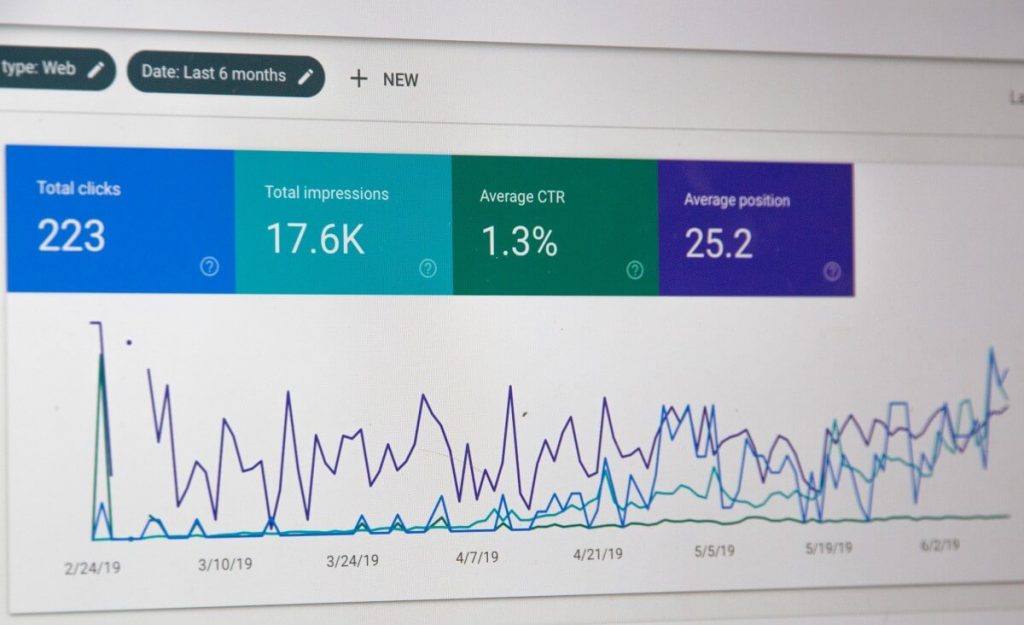Investing in your company’s marketing isn’t always easy. It’s challenging to figure out what strategies to try and which to continue, and how to measure success. Do you currently have a method to analyze which strategies to focus on, and which to continue after your initial testing phase? If not, read on!
First, it’s you need to understand which marketing strategies have the potential to offer you the highest return so you can figure out where your valuable time, effort, and investment should go. We’ll outline some of the top digital marketing strategies below—since the world is so digital these days—and explain which have the highest potential and how to analyze them.
Email Marketing:
In 2019, over 5.6 billion active email addresses existed, and engagement has been steadily increasing. The average ROI for email marketing is 3,800% making it come in at the top of our list. That’s an average of $44 for every $1 spent (emailmonday). It is the strategy to dive headfirst into if you want to grow your business quickly and engage your potential customers.
However, email marketing is not an overnight fix and needs to be performed frequently using email best practices to make it a success. You need to build trust and credibility before people are going to take your emails seriously. Be consistent, tell stories and have a brand personality, and you’ll start seeing results from email marketing. Read about email marketing best practices here.
Website:
Websites are a one-time cost that boosts your ROI for pretty much every other type of digital marketing you do. A website can cost $2000 to $10,000 or more and has a high ROI that is variable for everyone; it depends on the amount of other digital marketing you are doing to get website traffic and convert them to customers.
Pay Per Click Advertising:
Pay-per-click (PPC) advertising simply means paying a platform like Facebook, LinkedIn, or Google every time someone clicks on your ad. The average return is about 100%—so putting $1 into PPC ads will, on average, result in a $2 return. Google ads may result in an even higher return than this average, up to 800%. (webfx)
Search Engine Optimization:
Search engine optimization, or SEO, is the practice of optimizing your website for search engines like Google or Bing. It entails adding keywords to your website, blogging, updating the site frequently, adding meta tags, and more.
Unlike PPC ads, SEO is an investment that keeps on giving back instead of having to pay every time someone clicks. Adding keywords to your site and optimizing it in other ways can create a long-term increase in website traffic.
Writing thought leadership blogs 8x per month utilizing industry keywords has an average ROI of 748%. That’s a lot of writing each month, but scaling it back can be very successful too. In my experience, I’ve observed numerous blogs continue to increase website traffic for years; these ultra-successful articles contained valuable content and included hot keywords for SEO.
Traditional SEO (keyword optimizing with some blogging) has an average ROI of 16%, and technical SEO (like technical fixes or meta tags) has an average ROI of 117%. (firstpagesage)
Social Media:
Social media is a very extensive strategy that can be narrowed down to specific tasks like keeping up a page for your business, paid ads, engaging in other networks or groups, getting involved with thought leaders, and more. In the 2011 Social Marketing Benchmark Report from MarketingSherpa, they reported that the average social media ROI reported by CMOs measuring it is 95%! Also, almost one-third of survey takers reported an ROI of over 150%.
This is not a “quick fix” strategy. It takes a lot of involvement, strategic planning, and effort. It requires you to get creative to get followers, like writing guest articles or collaborating with thought leaders in your industry. Simply adding social sharing buttons on your emails or blogs and posting to your business page just isn’t enough to achieve a 95% or 150% ROI.
Content Marketing, The Golden Key to Marketing Strategy:
Neil Patel remarks that he has found content marketing to be really profitable, and we completely agree. This strategy involves creating content in the form of blogs, e-books, white papers, or even videos, and releasing them online on your website. You can then use this content in social media, email marketing, on your website to build your SEO, and so many other places.
If you have Google Analytics set up on your website, you can watch metrics for your blogs and pieces of content you put on your website. You can also look at where people are finding you from.

There’s a lot of value from content marketing that ties into ROI but it’s harder to measure: brand recognition. If you’re doing a lot of content marketing and you’re seeing your sales go up and Google Analytics is telling you that a lot of people are finding your website through your blog, then you can attribute some of this success to these efforts.
Video Marketing, a Content Marketing Strategy:
In a survey by Wyzowl, between 80 to 90 percent of marketers reported that video marketing provides them a good ROI, helps them generate leads, boosted website traffic, and has directly helped them increase their sales. As one of the most memorable ways to get a message across, it’s no wonder companies are ramping up their video marketing to keep up.
These differences between marketing channels demonstrates the importance of choosing the approaches that will serve you best. If you’re limited, put your energy into super-high ROI channels like website, SEO, and email marketing. If you’re more ambitious and ready to get even greater widespread brand awareness, get going with social media marketing, video marketing, and PPC ads.
How To Analyze Your Marketing Strategy
When it comes to any marketing strategy the first thing you want to figure out is what metrics are you measuring?
Maybe you are trying to grow email list or you’re trying to increase sales from your email campaigns. There are clear, quantifiable metrics to measure this; your email list is pretty easy to see how fast it’s growing. As for sales from email campaigns, there are sales tools like Salesforce that can tie email clicks to dollar amounts. You could do this manually, too. Take a list of the clients who purchased from you recently and look at their engagement on email campaigns.

Look at your numbers and if they’re going in the right direction, keep doing that particular strategy. But if they’re not and you don’t see any benefits to continuing, then it’s time to adjust.
There are a few strategies that you want to be persistent with despite any immediate results. For example, if you’re just starting your email marketing and it’s not paying off immediately, don’t feel too discouraged and keep being persistent. It takes time to nurture your email list into trusting you so give it 2-3 months of consistent effort before evaluating and adjusting if needed.
Marie Forleo, entrepreneur and philanthropist, was making videos for well over a year before she noticed people actually starting to care about them. The strategies that take the most time to work are the ones you need trust for. Prospects need to trust you before they’re going to convert into clients from emails, social media, video marketing, etc.
SEO is another tactic that can take some time. You need to be consistently blogging and updating your website, adding keywords, monitoring competitors, etc, before you see yourself starting to rank higher on search engines.
Other strategies should be a little more immediate. Paid ads, for example, shouldn’t take months for you to see results. So if you’re not seeing results within a few weeks, adjust the ad content or your target audience, or choose a different platform for the paid ad.
To summarize, a few of the marketing tactics that require more time to build momentum are:
- Email marketing
- Video marketing
- Content marketing, in general
- Website SEO
And a few marketing tactics that should be a little more immediate, so you can analyze results sooner:
- Paid advertisements
- Your website, depending on how well established you are (if you’re more established, you should start seeing more conversions right away if you just built or commissioned a new website)
If you enjoy a particular strategy, there is a huge benefit to that. It’s not going to take as much perceived effort on your part and you can keep doing it and watch it slowly flourish as you and build an audience.
If there’s another strategy that’s not easy and doesn’t come naturally to you, or maybe you don’t have the technical skills or knowledge to do it, then it’s perfectly reasonable to outsource that part of your marketing plan. Also, think about the value of what you’re investing your time into vs. the value of working on that particular marketing strategy. If you see a lot of value in spending your time elsewhere, that’s another reason to think about outsourcing it.






